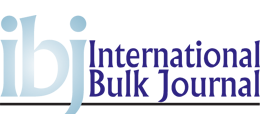


(Posted on 27/08/24)
At a time of heightened alertness to ship fires, key chemicals in the foams used to put them out are running dry, risking safety on board up to 40,000 seagoing vessels.
From 1 January 2026, the regulation of firefighting foams on ships will start to catch up with the global rejection of perfluoro-octane sulfonic acid (PFOS). From that date, use of PFOS will be prohibited onboard new ships, with existing vessels needing to replace them by their first survey thereafter.
Recognized as Persistent Organic Pollutants (POPs), PFOS were discontinued by major US chemical producers over a decade ago under Environmental Protection Agency pressure, with their use also tightly restricted in the EU.
Where firefighting foams are concerned, however, lack of maritime restriction has seen use of these durable compounds persist, even though the International Agency for Research on Cancer classifies them as “carcinogenic to humans”.
Once new regulations on PFOS in firefighting foams enter into force, Port State Control is likely to ensure that they have the “teeth” that some other areas of maritime legislation lack. Even so, at first sight the maritime schedule to phase out PFOS appears manageable. Requiring removal, disposal and replacement by existing vessels by their first survey within five years on 1 January 2026, the job is one for scheduled drydocking.
But the prospect of a pedestrian, if orderly maritime phase-out for these ‘forever chemicals’ in firefighting foams is fast evaporating.
First, while marine insurers continue to provide cover for firefighting systems holding PFOS, latest guidance indicates that this no longer extends to claims covering marine pollution.
Second, regional regulators have accelerated their restriction of another hazardous compound - polyfluoroalkyl substances (PFAS) – which are also widely used in foam firefighting systems on board vessels and offshore platforms.
In June 2023, the European Chemicals Agency recommended an EU ban on PFAS in firefighting foams. EPA also issued new reporting rules covering the manufacture and importation of PFAS in the U.S. in October last year, as one of several measures aiming to accelerate their phase-out. Threats of outright bans on PFAS are also under consideration in several European countries, Canada and Australia.
As a consequence, ship owners and managers are now learning that the supply of firefighting foams which include PFAS – let alone PFOS - is drying up.
VIKING Life-Saving Equipment is the industry’s leading supplier of life saving appliances, and also offers full foam inspection, replacement and certification services. The company reports that five leading marine foam OEMs have discontinued products that include PFAS during 2024.
Leading vessel performance platform Smart Ship Hub says the industry should expect a breakthrough year... Read more
The Nordic countries are taking an important step towards decarbonising maritime transport with the... Read more
Germany’s Steelpaint has appointed ADD Marine as its representative for Greece and Cyprus, strengthening... Read more
Rio Tinto’s first Pilbara-made iron ore rail car has rolled off the production line in Karratha... Read more
Precision meets progress at Phu My Port, Vietnam. The LPS 550 has been deployed to handle bulk commodities... Read more
bound4blue, a global leader in wind propulsion systems, has expanded its industrial footprint in Asia... Read more
As the industry explores multiple decarbonisation pathways, methanol is gaining attention as a practical... Read more
Technology group Wärtsilä will supply an integrated hybrid propulsion system for a bulk carrier... Read more
Superior Industries, Inc., a US-based manufacturer and global supplier of bulk material processing and... Read more
ESL Shipping has taken a significant step forward in digitalisation by deploying a new multichannel... Read more